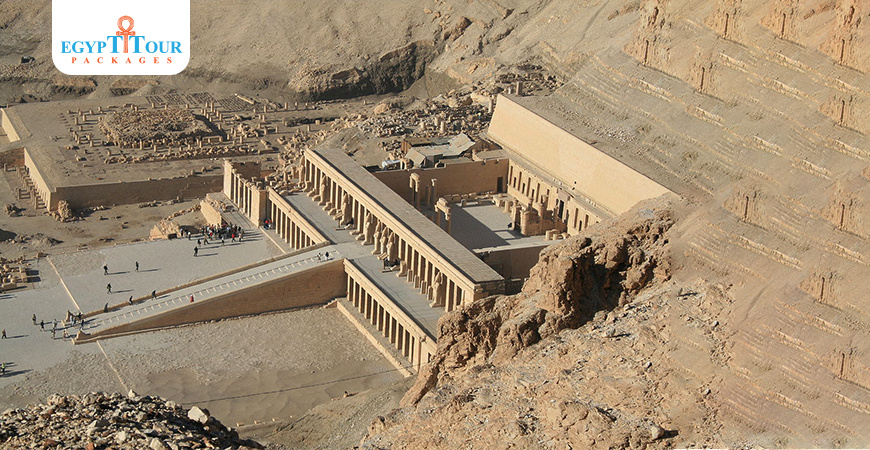
Hatshepsut Temple
Hatshepsut temple is an ancient example of pure visual architecture and there is simply nothing that can match the beauty and elegance.
Mortuary Temple of Hatshepsut
The design of the temple began in the eighth or ninth year of the queen's rule and was built of good limestone. The architect Senmut supervised the design of the temple.This engineer and his queen were impressed by the design of the funerary group of King Mentuhotep II and the system of terraces, so they repeated the same idea, and Senmut built the temple on three surfaces, one next to and above the other.
The courtyard the causeway led to an open gate in a wall surrounding a large courtyard.This courtyard represents part of the first level of the temple.The statues - which start from the Valley Temple and surround the causeway - continue in the first courtyard of the temple until they reach the two ponds that precede the ascending slope that leads to the second level of the temple. Each pool takes the shape of the letter T, and the two pools face each other.The courtyard had a garden with palm trees and myrrh.The idea of ??the garden was present in the group of Mentuhotep II. The courtyard ends from the west with two rows of columns on both sides of the slope, representing the end of the first level of the temple. Each row consists of 22 columns) on both sides: 11 columns on each side. These columns are decorated with the royal titles and names of the queen, and the northern row is bordered by a statue of the queen standing in the Osirisian potition, on the northern end. It was restored and the statue was refurbished on the southern row, towards the southern end.

Hatshepsut Temple Location
The temple commemorating Queen Hatshepsut is located north of the funerary complex of King Mentuhotepnebhebetre, west of the city of Thebes or Luxor, in an area called Deir el-Bahari. This area was named by this name, which is a modern Arabic name given to this area in the seventh century AD after the Copts used the temple of Queen Hatshepsut as a monastery. For them, this temple is located in the north of the region, and the north is known as Bahri,so it was called Deir el-Bahari in reference to the northern monastery. Excavations in that group began by Naville at the beginning of the twentieth century. The Metropolitan Museum mission headed by Wenlock worked on the collection in the years 1911-1931.
Valley Temple: It was built near the cultivated valley, completely demolished. From it were found deposits of furniture, alabaster utensils, engraved stone blocks,and engraved mud brick molds.These antiquities are preserved in the Metropolitan Museum, the Egyptian Museum, and the British Museum.
Puntland trip:I believe that Queen Hatshepsut's trip to the country of Punt is considered one of the most important events that occurred during the queen's rule of Egypt. It was a commercial trip that occurred in the eighth year of her reign, and we learned from the writings that the queen listed on the walls of her temple in Deir el-Bahri. She mentioned at the beginning of these writings that the god Amun was the one who inspired her to undertake the journey and ordered her to go to the country of Punt in order to bring the incense, dyes, and perfumes necessary to practice the divine rituals.
The causeway: extended from the valley temple and reached the courtyard of the temple rituals.This road was open and unroofed. On both sides of it, at equal distances, it included statues of the queen in the form of a sphinx. This road included a rest stop for the boat of Amun. An astraca with a view of that rest house was found in Deir el-Bahri, which is preserved in the British Museum.

Mortuary Temple of Hatshepsut
The design of the temple began in the eighth or ninth year of the queen's rule and was built of good limestone. The architect Senmut supervised the design of the temple.This engineer and his queen were impressed by the design of the funerary group of King Mentuhotep II and the system of terraces, so they repeated the same idea, and Senmut built the temple on three surfaces, one next to and above the other.
The courtyard the causeway led to an open gate in a wall surrounding a large courtyard.This courtyard represents part of the first level of the temple.The statues - which start from the Valley Temple and surround the causeway - continue in the first courtyard of the temple until they reach the two ponds that precede the ascending slope that leads to the second level of the temple. Each pool takes the shape of the letter T, and the two pools face each other.The courtyard had a garden with palm trees and myrrh.The idea of ??the garden was present in the group of Mentuhotep II. The courtyard ends from the west with two rows of columns on both sides of the slope, representing the end of the first level of the temple. Each row consists of 22 columns) on both sides: 11 columns on each side. These columns are decorated with the royal titles and names of the queen, and the northern row is bordered by a statue of the queen standing in the Osirisian potition, on the northern end. It was restored and the statue was refurbished on the southern row, towards the southern end.

Hatshepsut Temple Inside
The second level of the temple,The visitor reaches it via a slope on which the visitor ascends from the first level. This slope included a staircase in the middle. On both sides of this slope there is a balustrade. Its southern beginning, which leads to the second courtyard, is decorated with the appearance of a crouching lion. Its presence expresses the protection of this level of the temple, the protection of the queen, whose titles were written in front of it.The second slope includes a courtyard with a mud-brick temple for Amenhotep I and Queen Nefertari. Destroy it by sennmout when the Queen's Temple is built.It includes the western part of the northern wall of the second slope courtyard. A row of columns consisting of 15 columns in one row. This row includes four compartments.The courtyard ends from the west with two rows of columns on either side of the slope, representing the end of the second level.

Hatshepsut temple facts
The Hathor Shrine,There is a southern canopy on the second level, and it consists of a built part and the other part carved into the rock. The scenes of this structure represent the relationship of Hatshepsut and Thutmose III with the gods, headed by Hathor, and there are views of Senmut worshiping.

Hatshepsut Temple in Luxor
Mihrab of Anubis, There is a mihrab to the north of the northern canopy on the second level. It consists of a rectangular hall that includes 12 columns. Its ceiling is decorated in blue and yellow stars and includes two niches facing each other. The walls of the mihrab were decorated with scenes of Hatshepsut and Tuthmosis III and their relationships with the gods, led by Anubis.

Hatshepsut temple inside photos
The third level ,The visitor reaches it via a ramp that the visitor ascends from the second level. It includes a ramp and in the middle of this ramp there is a staircase. There is also a handrail on both sides of the ramp. The beginning of this handrail is decorated with a sculpture of a cobra with a falcon on top of it, spreading its wings around it. The third level contains two rows of columns, each row consisting of 22 columns on both sides: 11 columns on each side. A statue of Queen Hatshepsut, standing in the Osirian form, is installed on the front of each column.
Memorial Gate, There is a gate in the middle of the western wall of the colonnade. The gate was engraved with the names and royal titles of Queen Hatshepsut, but it was taken by Tuthmosis III, so the titles and names of the two kings sometimes appear in it. There are feminine epithets, but Tuthmosis III’s men did not take care to destroy them.
Courtyard of the Columns, The former gate leads to an open courtyard containing columns, most of which are demolished. There are 18 niches that used to contain statues of the queen.
Rituals and rituals of Hatshepsut and Tuthmosis I.South of the courtyard, there are columns containing the rites and rituals of Hatshepsut and Tuthmosis I.

The Temple of Hatshepsut
The shrine of Ra-Hor-Akhty, is located north of the hypostyle court. It is an altar for ascended to by a staircase designated by Hatshepsut for the offerings of Ra-Hor-Akhty. It is inscribed with the text of dedication and dedication.The shrine of Ra-Hor-Akhty is located north of the hypostyle court. It is an altar for ascended to by a staircase designated by Hatshepsut for the offerings of Ra-Hor-Akhty. It is inscribed with the text of dedication and dedication.

The Mortuary Temple of Hatshepsut
A second cabin for Anubis, The middle of the northern wall of the former altar hall includes an entrance that leads to a rectangular hall that extends from south to north and includes in its western wall an entrance that leads to another hall. The building represents a second cabin for Anubis.
The sanctuary of Amun, There is a building north of the hypostyle courtyard, leading to a rectangular hall extending from south to north, representing the chamber of Amun.

Temple of Hatshepsut at Deir el Bahari
The Holy of Holies, There is an entrance in the middle of the western wall of the hypostyle court that leads to a rectangular hall carved into the rock that includes four niches in its northern and southern walls. The hall includes an entrance in its western wall that leads to a small hall that includes two facing niches, one in the north and others in the south. It was completed in the Ptolemaic era. Adding a shed supported by four columns and a hall to the west of the Holy of Holies. The halls of the Holy of Holies were decorated with scenes of Thutmose II and III, Hatshepsut and their relationships with the gods.

Post A Comment
Your Email Address Will Not Be Published.











































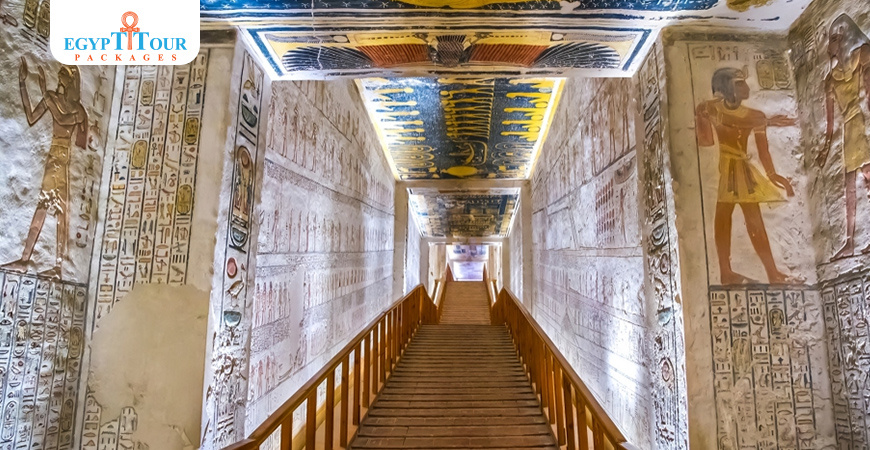

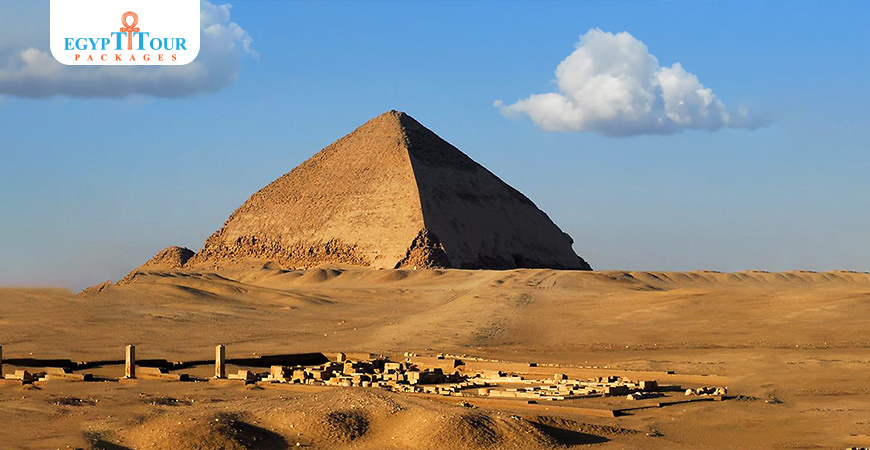


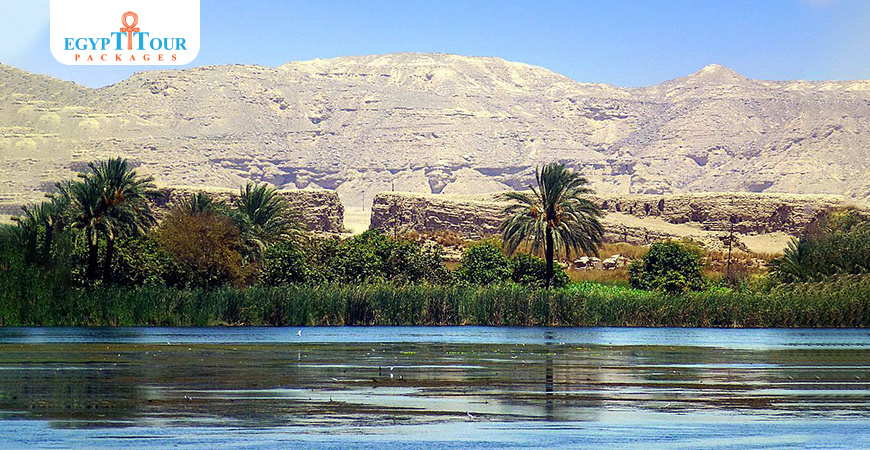

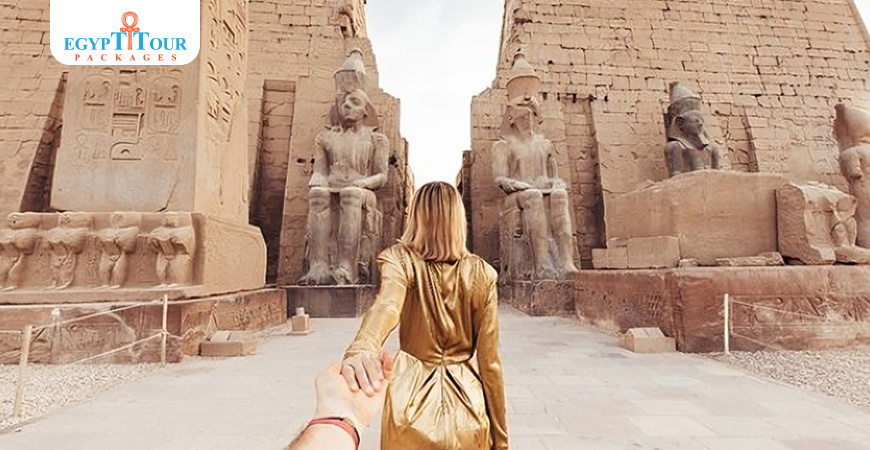
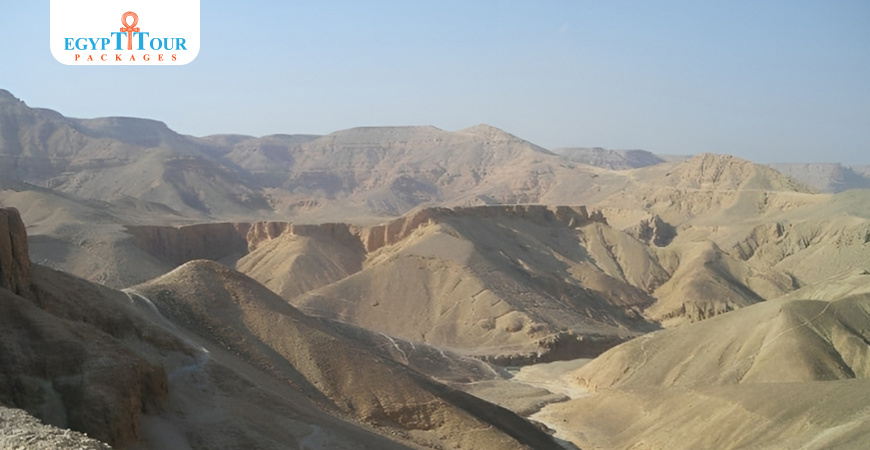
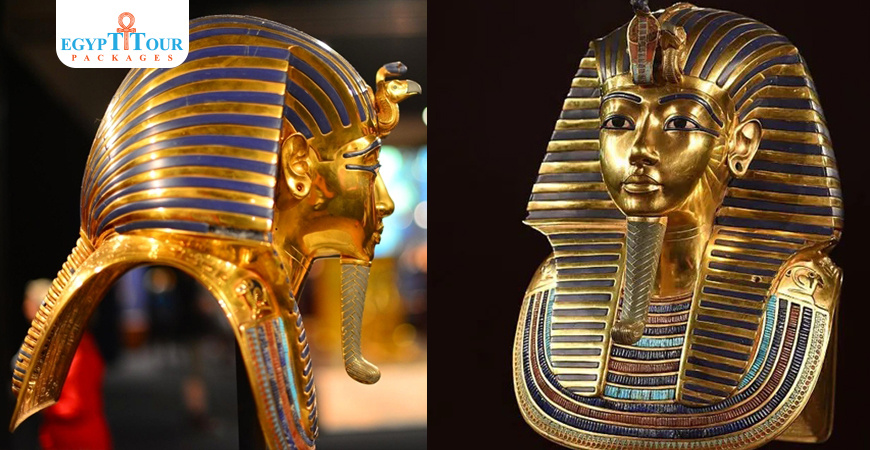
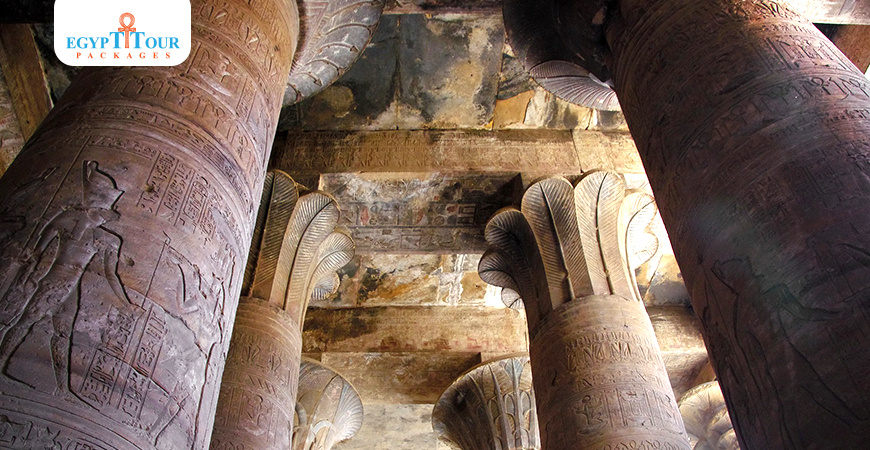
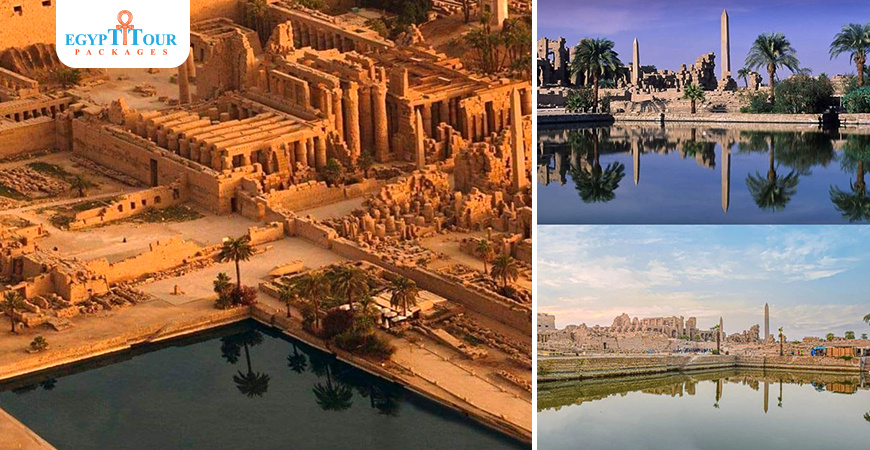
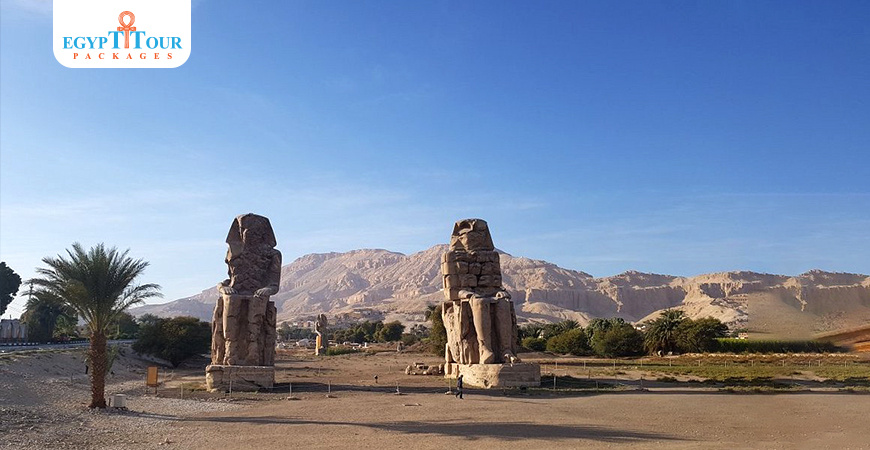
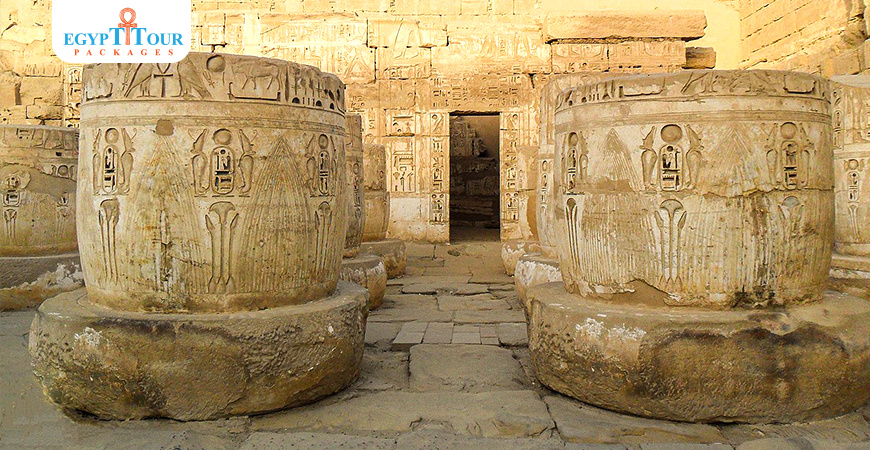
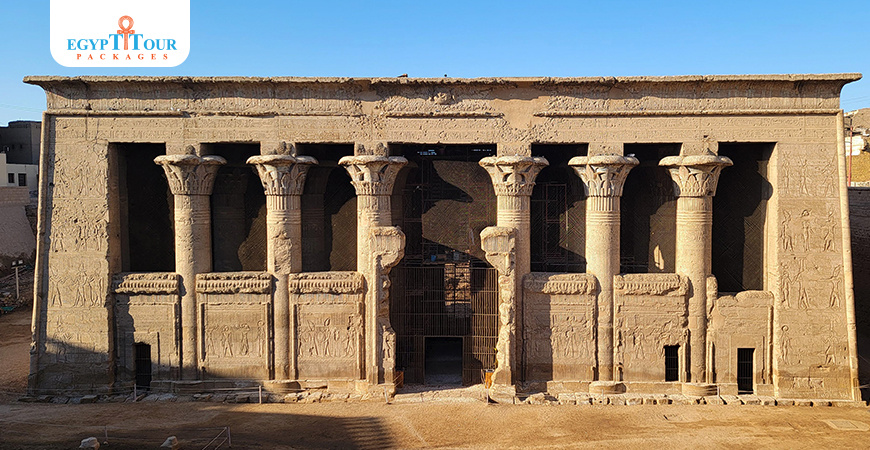
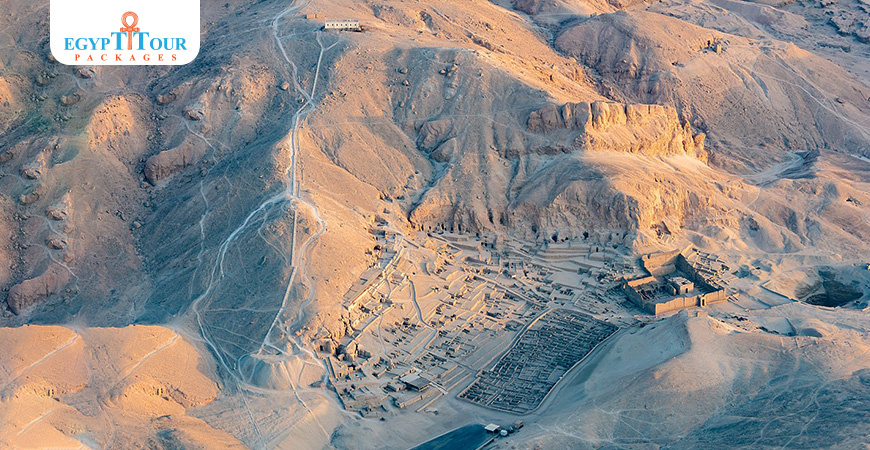
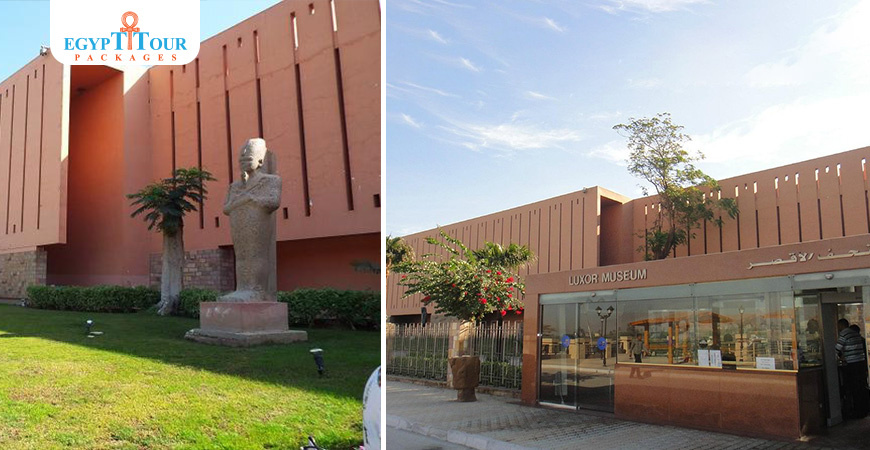
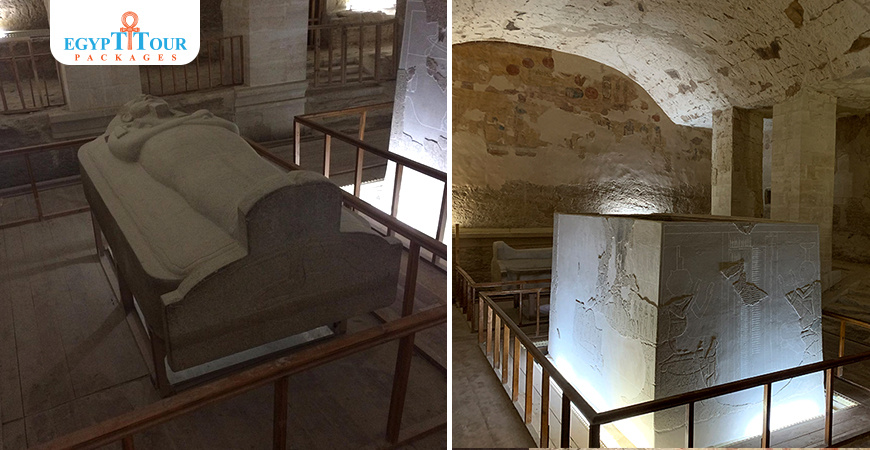

0 Comments